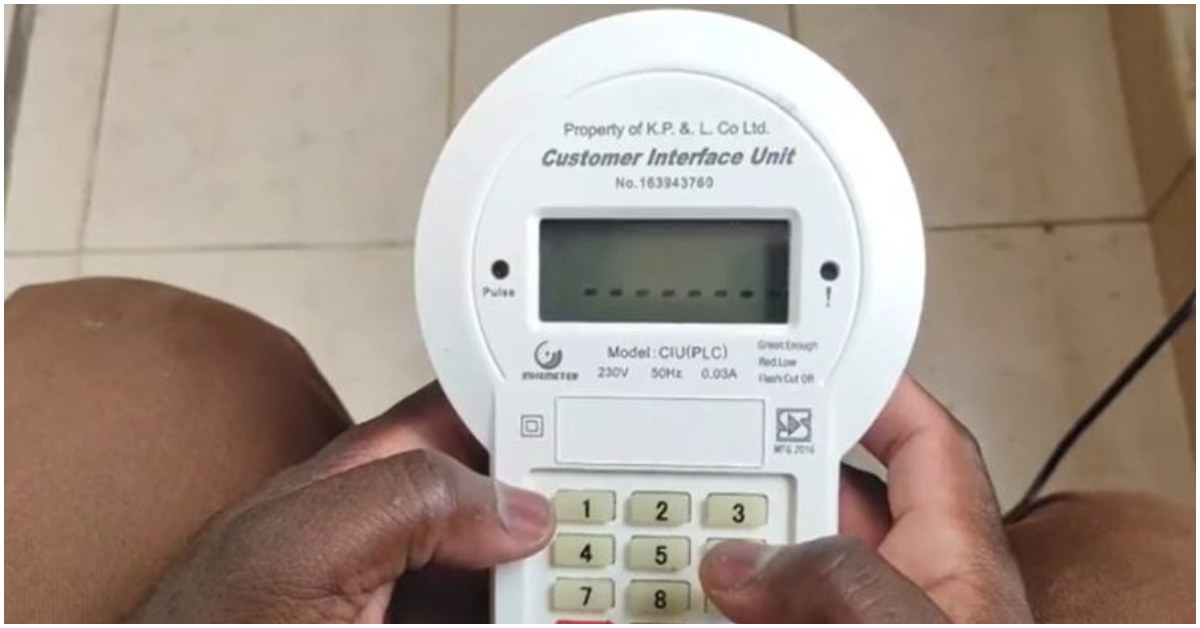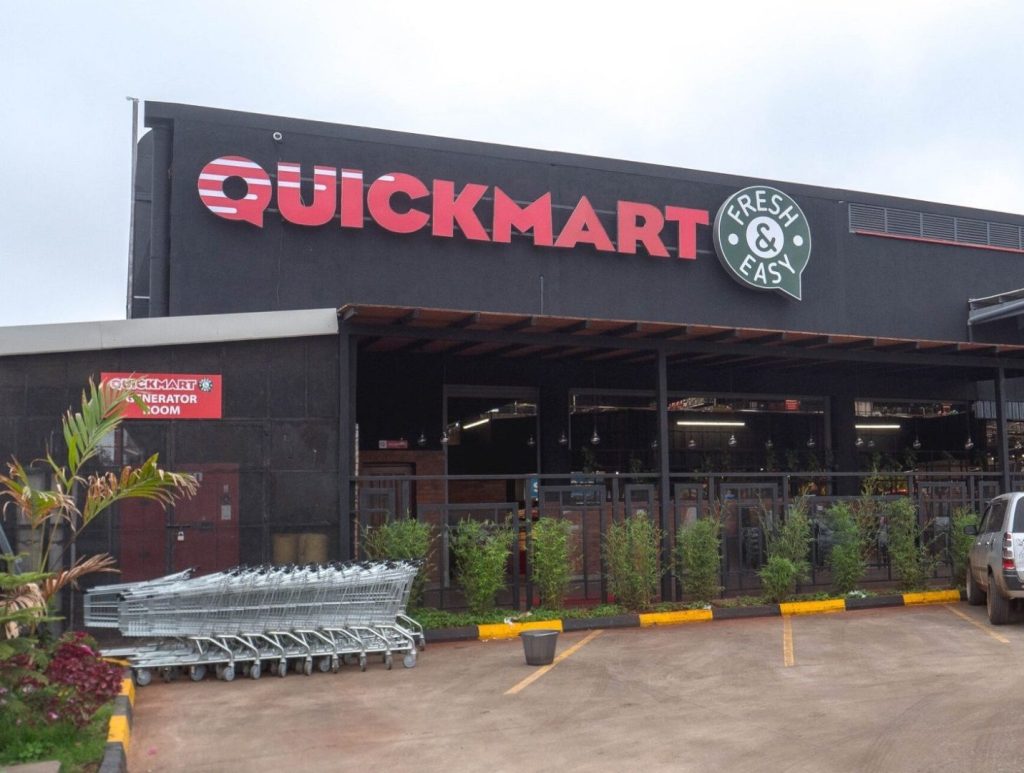Have you noticed that your electricity tokens don’t go as far as they used to? It’s not just rising costs—your tariff category could be silently eating into your power.
Kenya Power doesn’t charge everyone the same. In fact, your electricity rate depends on how much power you use—and it can make a huge difference in your monthly bill. Here’s what they don’t always explain:
Domestic 1 – The Lifeline You Didn’t Know You Needed
If you use 30 units or less per month, you fall under the Domestic 1 category, often called lifeline customers. Here, electricity costs just KSh12.23 per unit—a much lower rate meant to cushion low-consumption households.
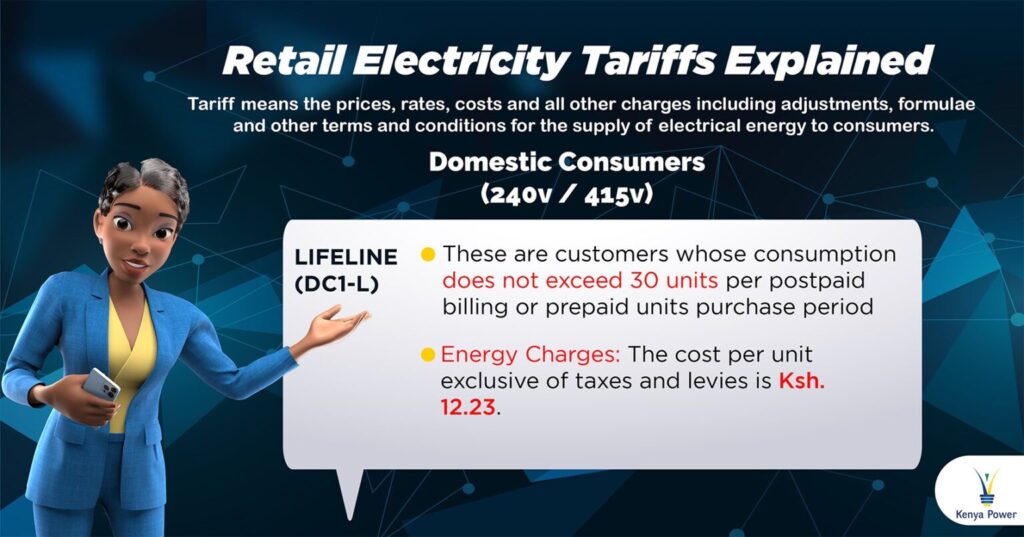
This isn’t charity; it’s a deliberate effort to make power affordable for those with modest needs. But once you go even one unit above 30? You’re out.
Domestic 2 – The Quiet Climb
Use between 31 and 100 units? You’ll pay KSh16.45 per unit. That’s a jump of over 34%—and many households don’t even realize they’ve crossed the line.
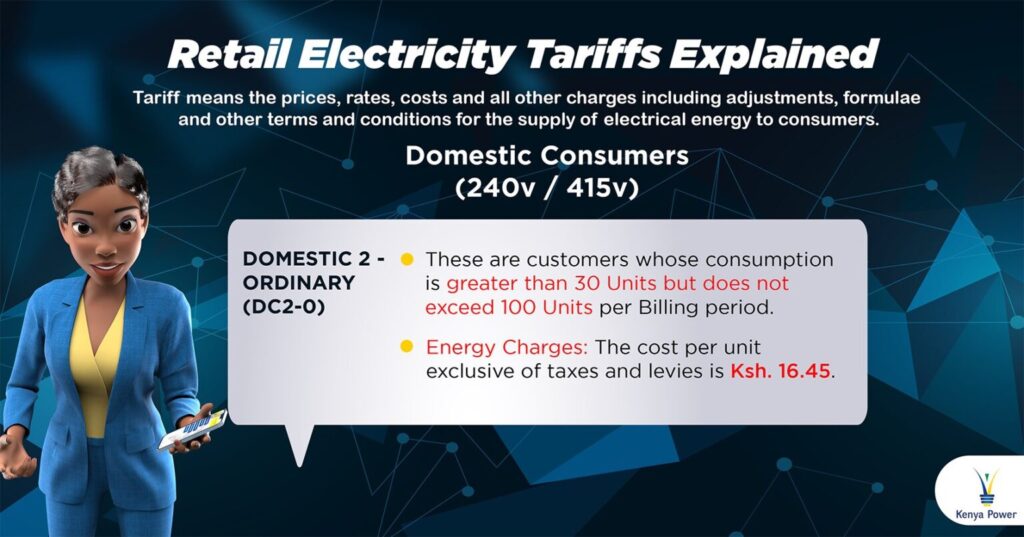
That small increase in appliance use, longer lights-on hours, or new electronics could quietly shift you into a higher tariff.
Domestic 3 – The Heavy Hitters
Use more than 100 units monthly? Now you’re paying KSh19.02 per unit. That’s more than 50% higher than the lifeline rate.
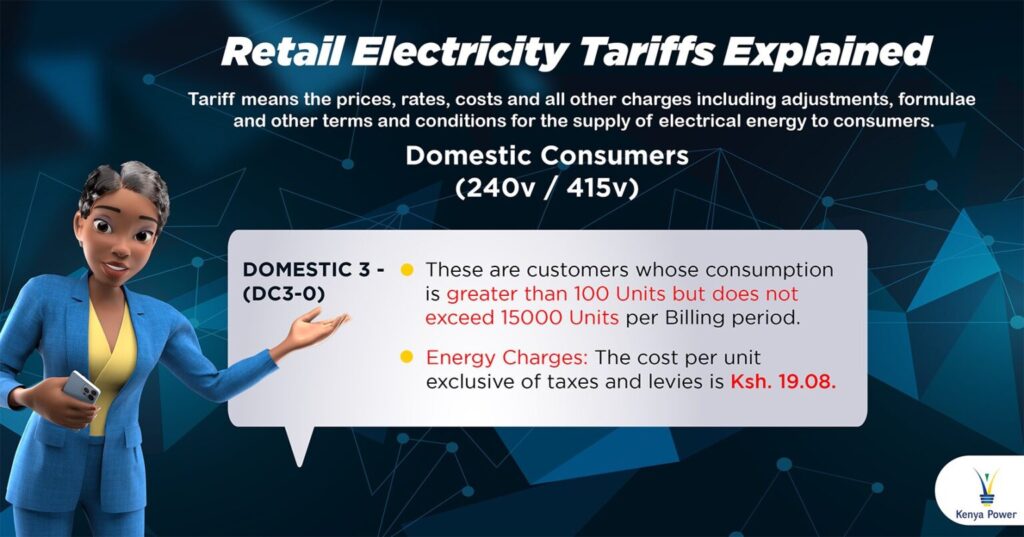
And once you’re in this category, the bill can feel punishing—especially when usage is steady, but rates keep biting.
But Here’s the Catch
Your tariff isn’t based only on your latest usage—it’s calculated based on your average consumption over three months. So even a one-time spike can lock you into a higher rate for months to come.
So What Can You Do?
- Track your usage carefully.
- Be strategic—one small change might keep you within the cheaper bracket.
- Know your tariff category and how close you are to crossing over.
Electricity is a necessity, not a luxury. But if you’re not aware of how the tariff system works, you might be paying more than you should—without even realizing it.
Sometimes, power isn’t just in the socket—it’s in knowledge.
